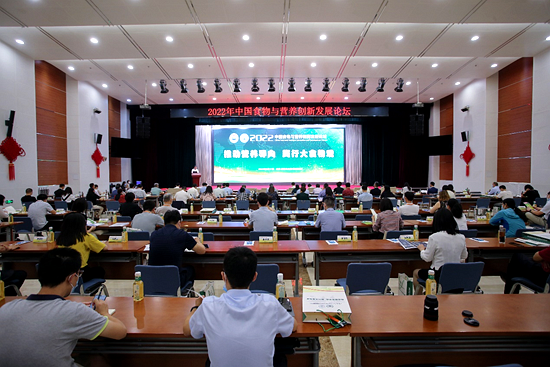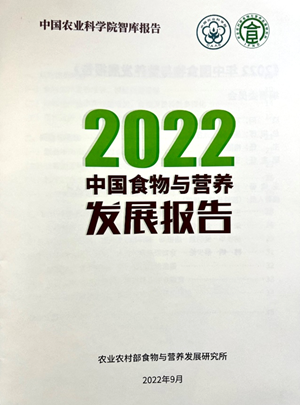
The 2022 China Food and Nutrition Development Report was released in Beijing on Sept. 17 at the 2022 China Food and Nutrition Innovation and Development Forum.
The Report was compiled by MARA Institute of Food and Nutrition Development, a think tank of the Chinese Academy of Agricultural Sciences (CAAS). With a “greater food approach” to nutrition, the Report summarizes up the changes and trends in food and nutrition since the implementation of the reform and opening-up policy, puts a spotlight on the problems in and challenges faced by food and nutritional development, and puts forward a series of recommendations, offering insights into the delivery of a “greater food approach” to nutrition.
As the Report shows, China has made significant progress in food production and supply, realizing a historic transition from feeding its people to feeding them well since the reform and opening-up. In general, China’s food production features abundance in quantity, meeting food calorie requirement, and yet unbalanced mix of agricultural products. China’s grain output has registered 680 million tons, with its annual per capita grain supply reaching 600 kilograms. Agriculture supplies 3,400 kcal per person per day for Chinese residents, which meets the demands in nutrition and health of its population. In terms of product mix, China is basically self-sufficient in the supply of grain, vegetables, fruits and meat while witnessing a surge in the import of soybeans, vegetable oil, milk, and feed.
The Report also identifies some urgent food and nutritional problems, highlighting the unreasonable dietary structure, the coexistence of nutrition excess and deficiency, excessive processing of food, and food loss and waste throughout the whole industry chain. The Report calls for the awareness-raising on food and nutrition, balanced dietary structure, stronger supporting systems to ensure nutrition security.
The Report puts forth a series of policy recommendations concerning the shift to nutritional and healthy diet. Firstly, China should accelerate the development of nutrition-oriented agriculture. Secondly, China should foster the consumption of a third staple food along with rice and wheat and step up efforts in developing whole grain foods. Thirdly, China should increase production and consumption of white meat. Fourthly, China should boost the innovation of key technologies in food and nutrition.
